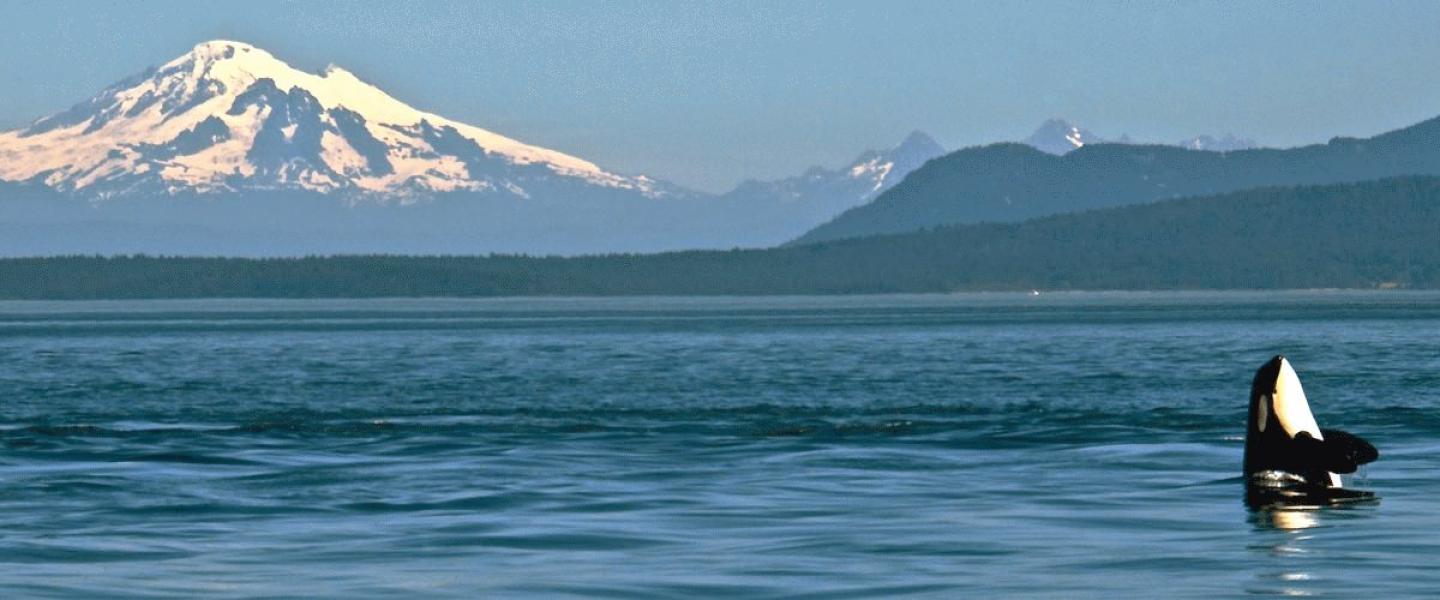
At this point, our avid readers know that orcas are the world's largest dolphins, despite the fact that their common name is Killer Whale. Because the name Killer Whale is such a misnomer we almost exclusively use their scientific title of orca. Up until this week they were also the only dolphins that we see in the Salish Sea. There have always been vague reports about Pacific White-sided Dolphins being spotted in these waters, but the reliability of those reports always carried about as much credibility as the ones about sea otters. On Monday though, things changed. One boat after another radioed in that there was a pod of "Lags" just outside of Friday Harbor. Pt. Caution, Reed Rock, San Juan Channel. By 11:45 AM though, the reports had stopped and the animals had disappeared. Like many other elusive creatures in these islands, they were "lost".
Pacific White-sided Dolphin. Photo courtesy of noahworld.org
Suddenly at 5:30 PM the P/V Odyssey called in that they had rediscovered the dolphins in San Juan Channel, next to Lopez Island and heading for Cattle Pass. That meant that they were swimming south and would probably disappear. Tragic, since our guests would not get the chance to see them. Out of the blue, the big blue that is, the Lags popped up again today and now they were within range and our time schedule to see them. Luckily there was a boat tracking their movements, so we could travel straight to both of our dolphin species today; orca and Pacific White-sided.
Pacific White-sided Dolphins. Photo courtesy of Monterey Bay Aquarium
Pacific White-sided Dolphins are compact cetaceans that range from 7-8 ft. in length and weigh approximately 350 lbs. They have a dorsal fin that is overly large for their size and they have a large white patch on either side of their body. Their white markings are what give these dolphins part of their scientific name, Lagenorynchus obliquidens. Obliquidens refers to the oblique, or side, markings. Lagenorynchus is the reason that the animals are called Lags for short. They were once common in the area, but are now seen on only the rarest of occasions, like this week. It has been a surprise to see them and undoubtedly they will slip away, just as quickly as they appeared.
So, from all of us at San Juan Safaris, to all of you who favor flashy markings, thank you and we will...
See You In The Islands!
~Tristen, Naturalist
P.S. - L47 "Marina" was spotted with her family today and her new calf is still alive and well. Yay, Marina!